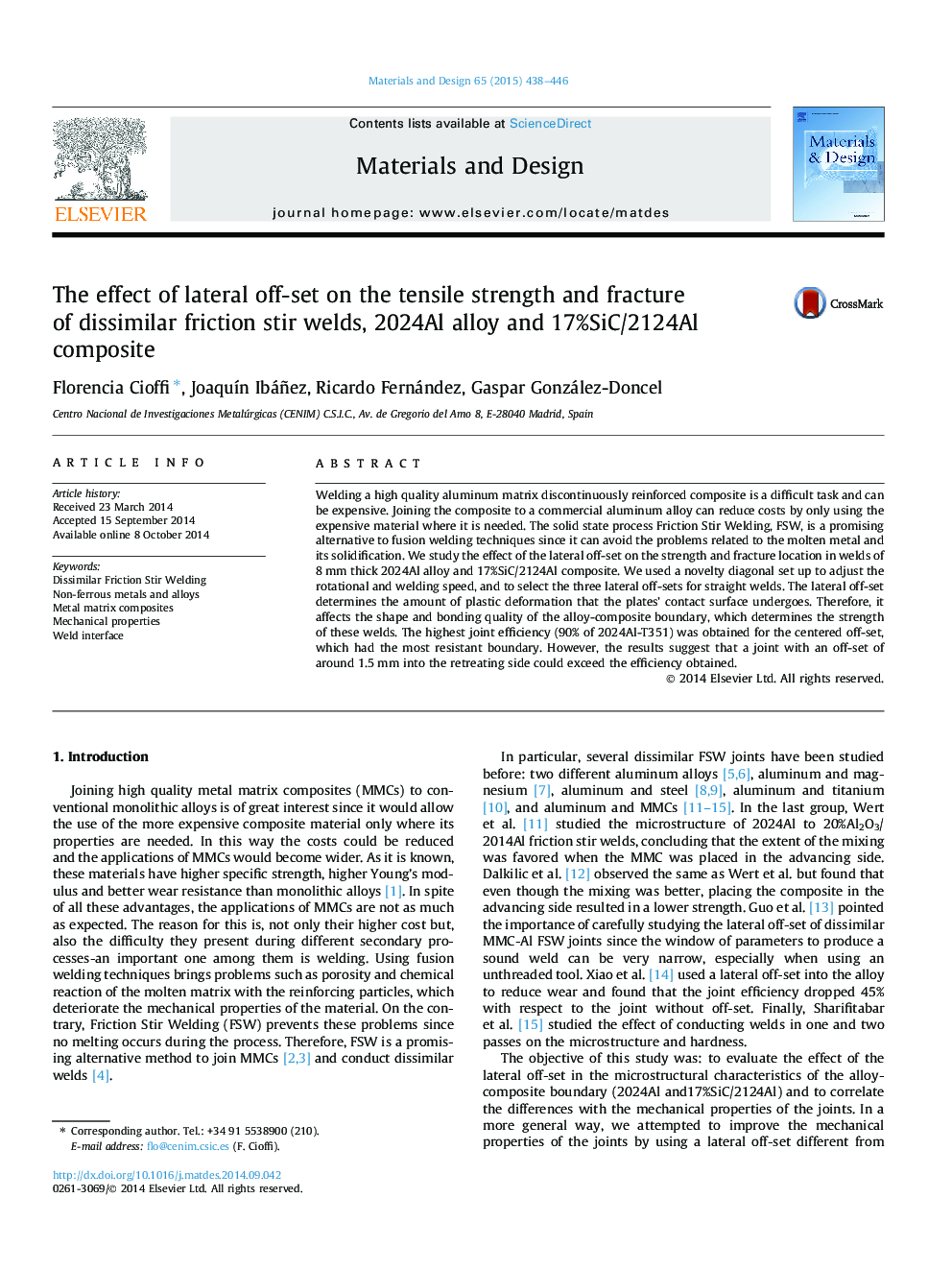| Article ID | Journal | Published Year | Pages | File Type |
|---|---|---|---|---|
| 828825 | Materials & Design (1980-2015) | 2015 | 9 Pages |
•We FSWd a 8 mm thick MMC with high volume of SiC particles to 2024Al.•We designed a diagonal setup that allows scanning different off-sets simultaneously.•We used the design to optimize the welding parameters.•We studied three off-sets and compared their mechanical properties and fracture.•We reached 90% efficiency in one of the joints.
Welding a high quality aluminum matrix discontinuously reinforced composite is a difficult task and can be expensive. Joining the composite to a commercial aluminum alloy can reduce costs by only using the expensive material where it is needed. The solid state process Friction Stir Welding, FSW, is a promising alternative to fusion welding techniques since it can avoid the problems related to the molten metal and its solidification. We study the effect of the lateral off-set on the strength and fracture location in welds of 8 mm thick 2024Al alloy and 17%SiC/2124Al composite. We used a novelty diagonal set up to adjust the rotational and welding speed, and to select the three lateral off-sets for straight welds. The lateral off-set determines the amount of plastic deformation that the plates’ contact surface undergoes. Therefore, it affects the shape and bonding quality of the alloy-composite boundary, which determines the strength of these welds. The highest joint efficiency (90% of 2024Al-T351) was obtained for the centered off-set, which had the most resistant boundary. However, the results suggest that a joint with an off-set of around 1.5 mm into the retreating side could exceed the efficiency obtained.
